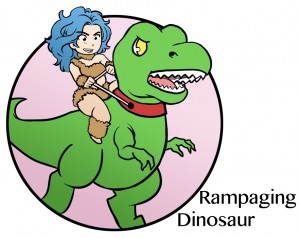My main computer is currently down for the count, leaving me with a tablet that is a tad hard to type and do work on. So today’s post is going to be a bit threadbare. However, I’ve been interested in radioactivity recently and have a couple of great articles to share. When we think of radioactivity there is one place that the conversation turns to again and again: Chernobyl. (Unless you’re higher up on the geek scale, and then the words might be Tokyo/Godzilla or Sewer/Turtles). But the place exists hauntingly in our collective memory, pictures of abandoned amusement parks or dust strewn nurseries. It’s the setting for numerous videogames and horror movies, always seen in that half-lit glow of a cloudy twilight sky. But there are those who don’t seem as prone to the fear that we hold in regards to Chernobyl, those who explore it and document it… and those who bike right up to its edges and drive through it to blog about the experience. Bjørn Harvig’s images of Pripyat, the city outside of Chernobyl, aren’t really any different than the dozens of images that have come from other explorers. But these aren’t the only images that he has. What’s intriguing about his explorations is that he stopped to chat with the locals who live just outside the perimeter, those people who came back to live in this strange place, often because they didn’t have the money to buy housing anywhere else. It’s from these people that Harvig learned of the looting that happened after Pripyat was abandoned, of the hundreds of thousands of pieces of contaminated furniture and vehicles that were then sold in markets all over the Soviet Union. He also discusses the current work going on at the site to keep the concrete cover from eroding completely. He talks to parents who sent their children away to live far from the dangerous environment and includes images of the people that he met with, pictures of children and grocers and families who live directly in the shadow of one of the worst diasters of the modern age. When reading about radiation it’s sometimes a bit difficult to understand the measurements. Often times radiation is talked about in picocuries, or a millionth of a curie. But what is that mean? Any radiation at all is bad, right? No matter how small?Actually, no. Despite what we might want to believe we do not live in a radiation-free world. Most of the food we eat every day is slightly radioactive naturally, food that we eat without any additional harm to ourselves. This is why some officials have taken to including a Banana Equivalent Dose when discussing radiation. Bananas have an average radiologic profile of about 520 picocuries per banana, enough that sometimes crates of bananas will set off false alarms at port security stations. Knowing that, when someone tells you that the Three Mile Island event resulted in radioactive milk at levels of 20 picocuries/liter it’s easier to understand why officials didn’t think it was that big a deal. After all, that’s only 1/75th of the radioactivity that you would get from ingesting a banana, something that most of us do without worry. One of the fields where radiation is a big concern is space travel. Here on Earth our magnetic field protects us from some of the worst of cosmic radiation but astronauts on a 9 month journey to Mars would need some other sort of protection. Currently ideas range from specialized shielding like a space snuggie to something more akin to a force field. But no one is entirely sure of the amount of danger such a mission really poses to those travelling, or how to mitigate it. It’s possible that things as simple as antioxidents might help, but sensitivity to radiation may very well vary from person to person. So there’s your brief look at radiation. Have a very happy Labor Day! If you have any technological powers or luck could you focus them my way? I’d love to have my computer back to normal.
